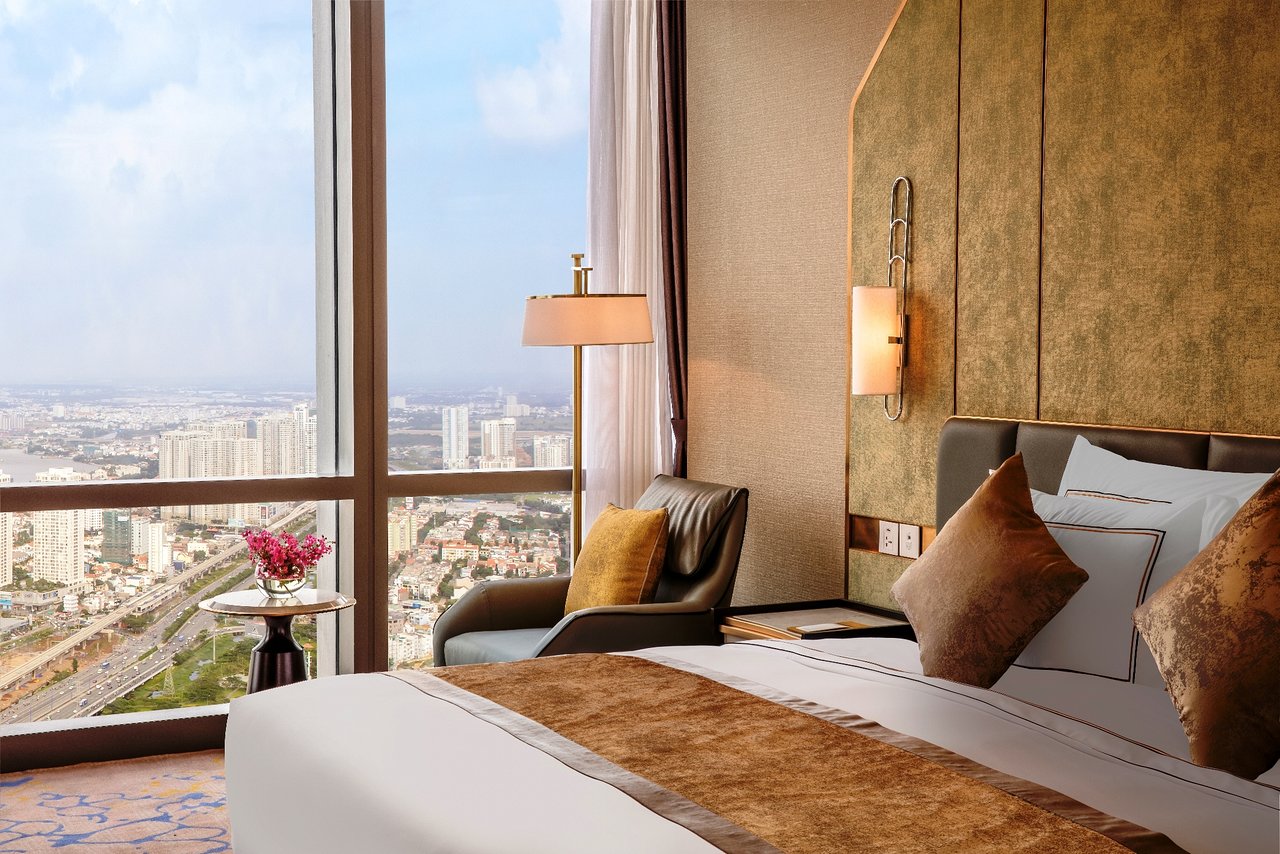
Inside a five-star hotel room of Vinpearl Luxury Landmark 81 in HCMC. Five-star hotels outperform their four-star counterparts across several criteria. (Photo: Vinpearl)
Grant Thornton recently released the results of the Vietnam Hotel Survey 2019, marking the 16th consecutive year that the consulting firm has conducted the only comprehensive research on upscale hotels and resorts in Vietnam.
In 2018, the average room rate rose 1.6%, from US$91.8 in 2017 to US$93.3. While five-star hotels continued to see their room rates increase by 4.1%, four-star room rates dropped by 2.3%.
The revenue per available room at five-star hotels soared more significantly due to the rise in the average room rate. The figure for their four-star counterparts, by contrast, dropped 3.6% compared with the previous year.
Also, the occupancy rate of five-star hotels increased a slight 0.5%, while that of four-star hotels edged down 1%.
Similar to the previous year, room sales continued to account for the highest portion of total revenue, at 59.3%, and slid 2.3% from 2017 to 2018.
While food and beverage sales made almost no change in the two years, other sales started to increase proportionally, showing a shift in demand to other services rather than only room services.
Gross operating profit and earnings before interest, tax, depreciation and amortization of the upscale hotel sector in 2018 declined 0.5% and 0.6%, respectively.
According to the firm, this was mainly caused by higher undistributed expenses, which rose 1.4% in 2018. The ratio of payroll expenses to total sales inched up from 23.7% in 2017 to 25.2% in 2018.
Independent and leisure tourists, tour groups and corporate/business travelers remained the three largest components, together accounting for 78% in 2017 and 76% in 2018 of the total guests.
Meetings, Incentives, Conferences and Exhibitions (MICE) tourism slipped from 7.6% to 6.8%. This is the third consecutive year that this segment has plummeted.
Reservations through travel agencies and tour operators, still the largest channel, fell a sharp 5.1% in 2018 and were superseded by online travel agencies and other channels.
According to Grant Thornton, technology is no longer a stranger to Vietnamese hotels, as internet access and smart devices have become more popular. Managing their digital image is now a crucial part of hotels’ operations.
Overall, five-star hotels were shown to be embracing more digital development than four-star equivalents across all surveyed questions.
Digital marketing through social media channels such as Facebook and Twitter has become more popular.
Nearly all participants shared that they have used this effective channel to gain more awareness from social media users. Online check-in, check-out and guest personalization through a mobile app, however, received less attention, with under 50% of hotels using them.
Statistics from the Vietnam National Administration of Tourism indicate that 2018 recorded a total of 2,400 new accommodations, of which 83 were registered as three- to five-star properties.
Out of 83 new properties, with 22,419 rooms, 34 were five-star hotels (17,366 rooms) and 15 were four-star hotels, equal to 2,990 rooms. These new upscale facilities belong to both existing brands and new brands or operators.

















